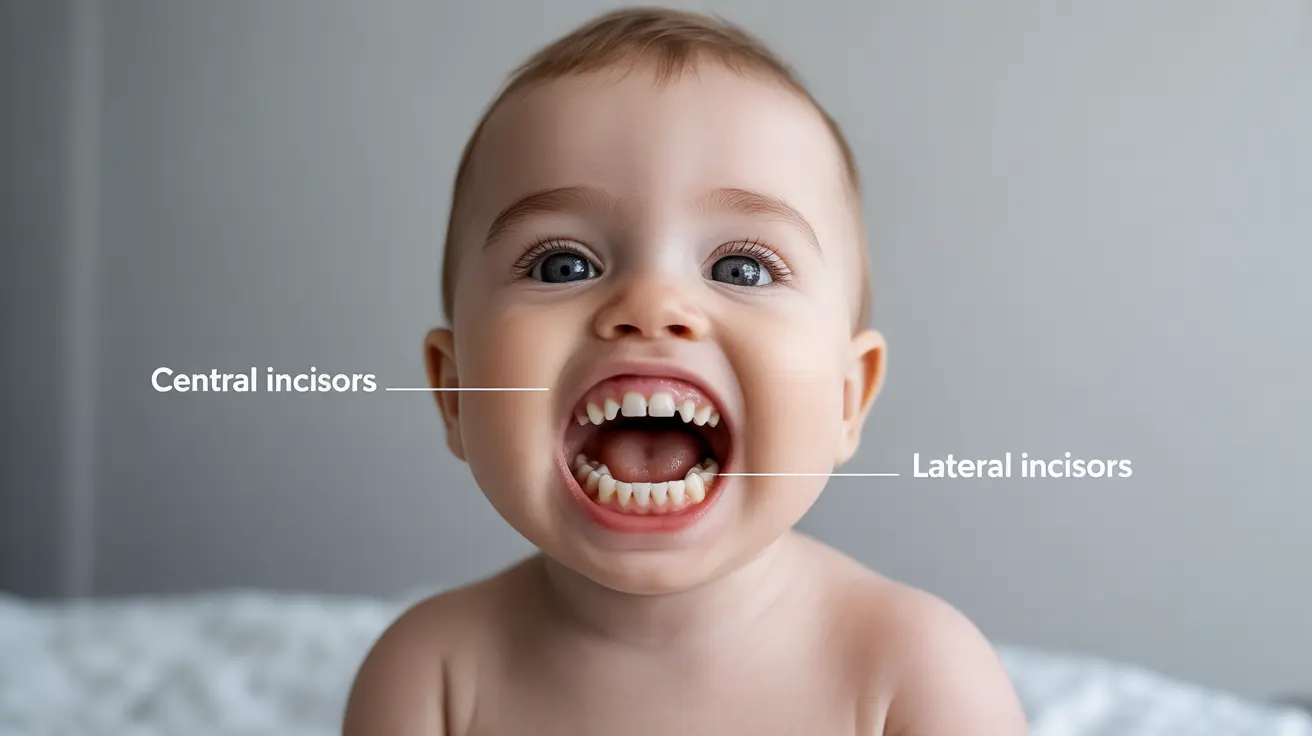When your baby's first teeth begin to emerge, it's an exciting milestone that marks the beginning of their dental development journey. While there's a typical order for baby teeth to appear, some infants may experience teeth coming in out of the expected sequence, which can naturally cause concern for parents.
Understanding the normal patterns of tooth eruption, as well as common variations, can help parents navigate this important developmental phase with confidence. This comprehensive guide will explore everything you need to know about baby teeth emergence patterns and what to expect during the teething process.
Understanding the Normal Pattern of Baby Teeth Eruption
Typically, baby teeth begin to emerge between 6 and 12 months of age, starting with the lower central incisors. This process continues until around age 3, when most children have their complete set of 20 primary teeth.
The standard order of appearance is usually:
- Lower central incisors (6-10 months)
- Upper central incisors (8-12 months)
- Upper lateral incisors (9-13 months)
- Lower lateral incisors (10-16 months)
- First molars (13-19 months)
- Canines (16-23 months)
- Second molars (23-33 months)
When Baby Teeth Come In Out of Order
While there's a typical sequence for tooth eruption, it's important to understand that variations are common and usually not cause for concern. Each child develops at their own pace, and factors such as genetics, nutrition, and overall health can influence the timing and order of tooth emergence.
Common Variations in Tooth Emergence
Some babies might experience:
- Upper teeth appearing before lower teeth
- Molars emerging before front teeth
- Teeth appearing in pairs or groups
- Delayed tooth emergence
- Gaps between emergence of different teeth
Signs of Teething and Development
Regardless of the order in which teeth appear, most babies will show similar signs of teething, including:
- Increased drooling
- Gum swelling and sensitivity
- Irritability and fussiness
- Tendency to bite or chew on objects
- Changes in eating or sleeping patterns
- Slight increase in temperature (not high fever)
Managing the Teething Process
When teeth are coming in, whether in the expected order or not, there are several effective ways to help soothe your baby's discomfort:
- Gently massage the gums with a clean finger
- Offer cold teething rings or clean, chilled washcloths
- Provide safe teething toys
- Consider pediatrician-approved pain relief options
- Maintain good oral hygiene from the start
When to Consult a Healthcare Provider
While variations in tooth emergence are usually normal, certain situations warrant professional attention:
- No teeth have appeared by 18 months
- Significant delays between tooth emergence
- Signs of infection or severe pain
- Abnormal tooth appearance or positioning
- Concerns about overall oral development
Frequently Asked Questions
What are the typical signs of baby teeth coming in, and how long does the process take? Signs include increased drooling, irritability, and gum swelling. The entire process typically takes about two years, from the first tooth at around 6 months until all 20 primary teeth have emerged by age 3.
Can baby teeth coming in out of order be a cause for concern, or are variations normal? Variations in the order of tooth emergence are generally normal and not cause for concern. Each child's developmental timeline is unique, influenced by various factors including genetics and overall health.
How do genetics and nutrition affect the timing of baby teeth eruption and shedding? Genetics plays a significant role in determining when teeth emerge, while proper nutrition, especially adequate calcium and vitamin D, supports healthy tooth development. Family patterns often predict a child's teething timeline.
What are some effective ways to soothe a teething baby when teeth are coming in? Effective soothing methods include gentle gum massage, providing cold teething rings, offering safe teething toys, and using pediatrician-approved pain relief when necessary.
Is it normal for baby teeth to fall out in a specific order, and what does it mean if they don't? Baby teeth typically fall out in roughly the same order they emerged, but variations are common and usually not concerning. The process usually begins around age 6 with the lower central incisors.




